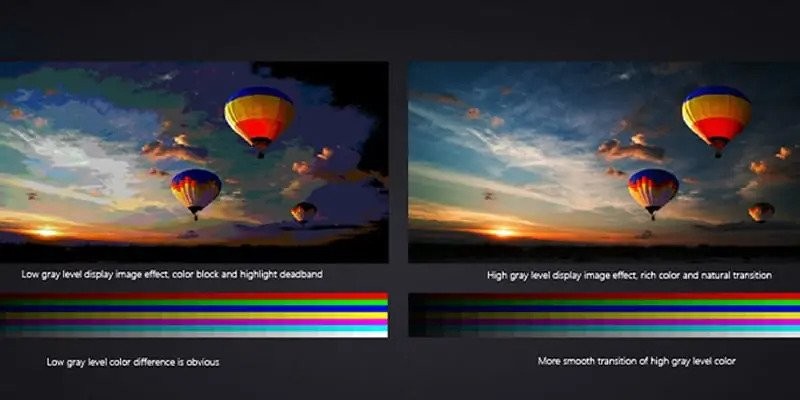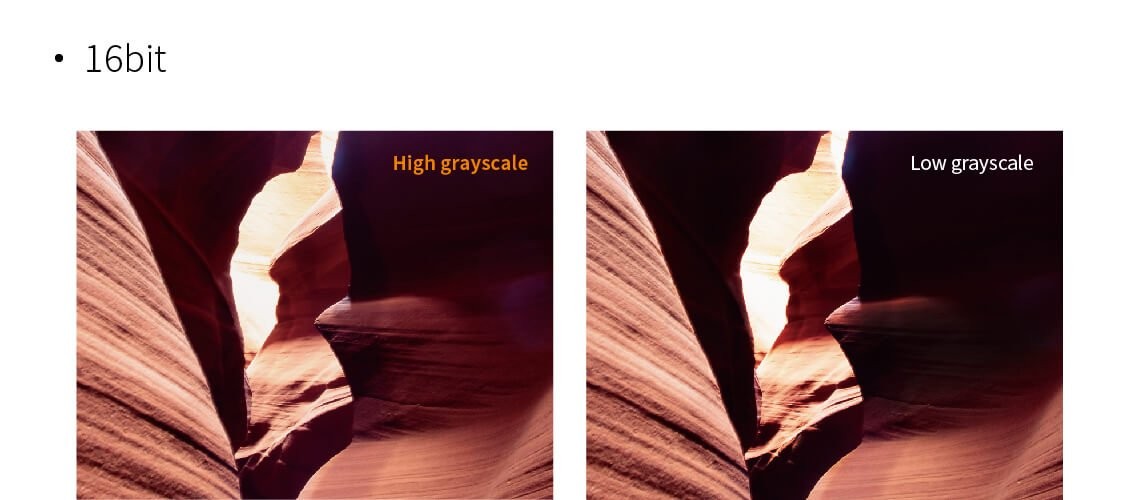2025-05-05
Share

What is LED screen grayscale?
In today's digital world, LED screens have become ubiquitous and are the primary display medium in a variety of applications such as TVs, computer monitors, and billboards. When it comes to image quality, a key aspect that is often overlooked is grayscale performance. Grayscale refers to the range of hues between pure white and pure black that a display can produce. For anyone looking for the best visual experience, it's crucial to understand the importance of grayscale and its impact on image quality.
As technology advances, the demand for high-quality visuals increases. Whether you're a creative professional, a gamer, or a casual viewer, the fidelity of the images displayed on your LED screen is important. Often overlooked, grayscale is impactful and plays a key role in the overall visual experience.
LED screen grayscale refers to the range of hues between pure white and pure black that can be displayed on a light-emitting diode (LED) screen. In LED screens, grayscale is achieved by controlling the intensity of the individual LEDs that make up the display. Unlike color displays, which combine red, green, and blue (RGB) LEDs to produce a broad spectrum of colors, grayscale displays use a single color channel to produce shades of gray. Each LED in a grayscale display can be dimmed or brightened to a different level, allowing for a smooth transition between black and white.
The grayscale is usually expressed as a numeric value between 0 and 255, where 0 is pure black and 255 is pure white. The value assigned to each LED determines its Brightness level, with higher values indicating brighter pixels and lower values indicating darker pixels. The ability to display grayscale shadows is critical in many applications, such as image rendering, video playback, and visual presentation. Grayscale screens can accurately reproduce images with different brightness and contrast by manipulating the LED intensity across the display. This feature allows for the creation of realistic visual effects, precise grayscale photos, and smooth gradient transitions.
LED screens offer several advantages when it comes to grayscale displays. They offer high contrast, deep blacks, and excellent brightness control for rich, detailed grayscale images. In addition, LED technology provides a fast response time, ensuring smooth video playback without motion blur.
The importance of grayscale in image quality

Grayscale is critical to image quality, and it has unique advantages that help enhance the visual experience. Grayscale is the tonal range between pure white and pure black in an image, with each hue representing a different level of brightness.
A key reason grayscale is critical to image quality is its ability to convey depth, texture, and detail. Grayscale enhances the visual perception of shadows, highlights, and midtones in an image by representing different levels of brightness. This allows for a more accurate and realistic presentation of the subject, capturing nuances and complexities that may be lost in pure black and white or color images.
In addition, grayscale provides a platform for effective contrast control. Contrast refers to the difference in brightness between different elements in an image. With grayscale, the contrast can be precisely adjusted, ensuring that important details are highlighted and the overall composition is visually appealing. Grayscale can create a delicate balance between light and dark areas, creating a sense of depth and enhancing the overall visual impact of an image.
Another advantage of grayscale in terms of image quality is its ability to evoke emotions and set the tone. Different shades of gray can create a mood or atmosphere in an image, ranging from soft and subtle to bold dramatization. Grayscale can add a timeless or nostalgic quality to a photo, enhance its artistic appeal, and convey depth and emotion that color alone can't.
Grayscale principle

1. Pulse-width modulation (PWM) principle
This is the main way to achieve grayscale control. PWM controls brightness by adjusting the proportion of time the LED lights turn on and off. For example, in a simple scene, if you want to achieve 2 levels of grayscale (black and bright), you can make the LED light on half the time and off half the time, and the average brightness seen by the human eye is half that of full brightness.
Specifically, for higher levels of grayscale, assuming that 8 levels of grayscale are to be achieved, a display period can be divided into 8 equal parts. If you want to display the 3rd level of grayscale, let the LED light turn on at 3 equal parts and turn off at 5 equal parts, so that the brightness perceived by the human eye is 3/8 of the full brightness.
For example, with a 100Hz refresh rate, each display cycle is 10ms. If you want to achieve 256 levels of grayscale, for the 128th level of gray, the LED light will be on for 5ms (128/256×10ms) and off for 5ms. Because the human eye has a visual lingering effect, it will mix the rapidly flickering light into a stable perception of brightness.
2. Principle of current regulation
In addition to PWM, brightness can also be controlled by adjusting the amount of current flowing through the LED. According to the luminous characteristics of LEDs, their brightness is approximately proportional to the current.
However, this method has some limitations in practical application. On the one hand, precise control of current is complex and requires a high-precision current source. On the other hand, changing the current size may affect the color consistency and longevity of the LED. Therefore, in most LED display applications, PWM is the main grayscale control method.
3. Software algorithm coordination
In the LED display system, there are also software algorithms to cooperate with grayscale control. For example, when displaying a moving image, you need to quickly calculate the PWM duty cycle or current size of each pixel based on the pixel information of the image and the preset gray level.Moreover, in order to ensure the uniformity of the gray scale of the entire display, the software algorithm will calibrate and compensate the brightness of the LED modules in different positions. For example, due to factors such as manufacturing process and aging degree, the LED at the edge of the display may be inconsistent with the brightness of the LED in the center.